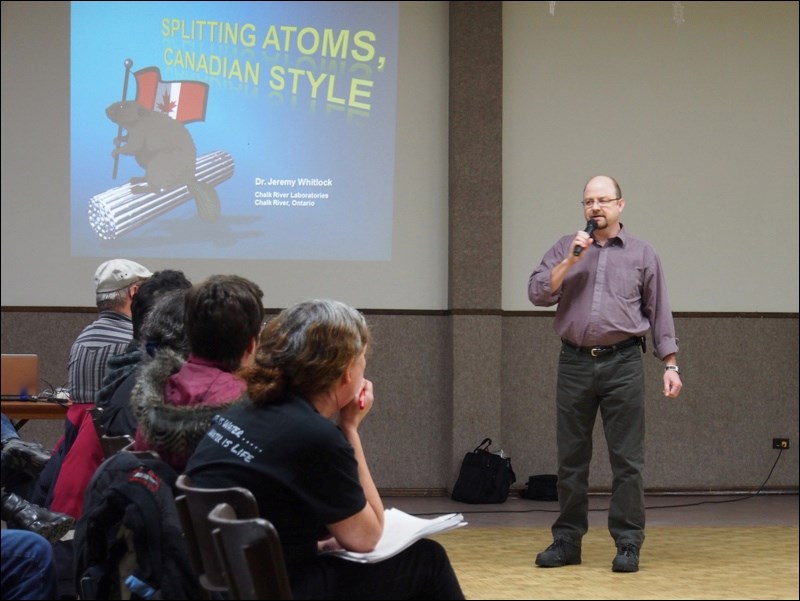Dear Editor,
Re: “Waste debate focuses on radiation,” Jan. 28.
As his CV indicates, Jeremy Whitlock has a career within the nuclear industry. He is a persuasive speaker, but he can also be wrong. His PhD is in Engineering Physics, not remotely close to health.
There is no basis for the statement: “We need radiation, in a small amount, in order to stay healthy.” Background radiation is present at the level of two to three millisieverts (mSv) almost everywhere in Canada – and most of us do not suffer from its presence.
BEIR VII concluded that there was some risk in any exposure to ionizing radiation above zero. We do know that in areas where the background radiation is higher, there are increases in genetic defects, the easiest to identify being Down’s syndrome.
(BEIR VII, Biological Effects of Ionizing Radiation, is the seventh in a series of reports by the prestigious National Research Council of the USA).
Whitlock brings up a frequently repeated nuclear industry myth: “The dose at which we see the earliest onset of observed negative health effects is about 100 millisieverts.” Saying this over and over again does not make it true.
The statement is utterly false. One radionuclide test after a heart attack – delivering 10 mSv – increases the risk of cancer by three per cent for every five years.
In the 1950s and again in the 1960s, two researchers, working entirely independently, were able to show that the amount of scatter from chest x-rays, less than 0.01 mSv, in pregnant women doubled the risk of leukemia in their offspring – and changed forever how we protect ourselves with lead shielding when having x-rays.
Minimizing the potential or actual effects of nuclear accidents is also characteristic of people whose salary is paid by the industry.
Mr. Whitlock trivializes an increase of a mere 10 mSv in background radiation from the Fukushima accident, but this, expressed over time, would be much greater exposure than a single MIBI or PET scan of the heart.
A huge number of people would be affected, to say nothing about the effects on children and unborn fetuses.
With respect to Jeremy Whitlock, in the words of the author Upton Sinclair, “It is difficult to get a man to understand something when his salary depends upon his not understanding it.”




